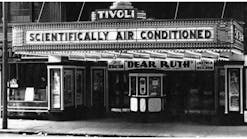Why the Middle East Needs Engineering Simulation Software
Any visitor to Dubai has experienced it—life in the Arabian Desert is done mostly within an air-conditioned bubble. Even five minutes spent outdoors on days when temperatures reach 45 °C (113°F) can be a struggle as well as a real danger if correct safety precautions are not taken. Residents keep their AC on in their homes 24/7, metros and taxis are always kept cool, just like offices and commercial buildings, which makes it possible to live several days without exposure to the outdoors, always in controlled weather. The situation throughout the Arabian Peninsula but also the entire Middle East is not very different; due to the hot and arid weather conditions during long summer seasons, locals rely on air conditioning in their chase for thermal comfort.
Thermal Comfort and Energy Efficiency
Thermal comfort is quite difficult to be achieved in this region, as the cumbersome task of mediating effective indoor temperatures with AC against an overwhelmingly hot outdoor climate prevails as a common challenge. Due to high temperatures, even having the air conditioning turned off for a couple of hours can result in a sharp temperature influx, meaning more energy is needed to cool a space down again. In cases like this, energy efficiency can often be an afterthought, as, counterintuitively, costs incurred will be much higher to turn AC units off and on compared to letting them run continuously.
Besides thermal comfort, this raises serious concerns regarding energy consumption, not only due to limited resources and high costs but especially the negative impact it has on the environment. To tackle this issue, the Middle East is investing heavily in finding alternative sources of energy, with wind and solar power at the forefront of these efforts.
Yet, simply finding other solutions to power heavily-air conditioned spaces will not be enough. There are smarter ways to achieve thermal comfort while striving for energy efficiency than turning on the AC to the maximum all year round. Engineers and architects alike are using technological innovations to optimize buildings and HVAC systems to meet standards and regulations as well as accommodate customer demands (ease of use, size, energy efficiency). A crucial technology in this process is engineering simulation and especially computational fluid dynamics (CFD) software.
How Can CFD Simulation Help Optimize HVAC Systems?
With CFD software, designers and engineers can simulate a space or building as well as different HVAC system designs to assess thermal comfort, indoor air quality, and more. Using simulation, design flaws and optimization possibilities can be identified. In areas with extreme weather conditions such as the Middle East, temperature, humidity, contaminant, and overall airflow patterns can be visualized in order to better plan ventilation to achieve both thermal comfort and energy efficiency requirements.
Whereas CFD simulation is not a new technology on the market, its accessibility has changed in recent years due to the emergence of cloud computing. With cloud-based simulation, barriers related to high costs, hardware investment, installation, and maintenance were removed, making the technology much more approachable and accessible to all.
One of the companies providing cloud-based simulation is SimScale, which gives access to a wide range of features and up to 96-core machines in a standard web browser, easily accessible with a yearly subscription-based pricing model.
Case Study: Nabtaker Ensures Thermal Comfort in the Qatar University
Qatar University
Based in Qatar and with 10 years of experience, Nabtaker is an engineering solutions company specializing in CFD. In a project developed using SimScale, Nabtaker had the task of solving an issue related to thermal comfort for Qatar University. The temperature in one of the university’s auditoriums was too high during summer as well as when its 239 places were fully occupied, and thermal comfort needed to be ensured throughout the entire year and in all external conditions.
By using computational fluid dynamics (CFD) simulation, Jafer Arar—CFD engineer at Nabtaker—tested two design configurations to assess the temperature and velocity inside the auditorium at full capacity. The effective draft temperature (EDT), predicted mean vote (PMV), and PPD predicted percentage dissatisfied (PPD) were also investigated.
CFD analysis of the auditorium, top view of the air velocity contour (Source: SimScale, Nabtaker)
The main challenge in this project was to assess the thermal comfort around all 239 occupants and identify those who would feel uncomfortable. With this task completed successfully, a new design was proposed to Qatar University, together with additional design changes to position the inlets and returns of the HVAC system.
Nabtaker is still using SimScale for other engineering projects, due to the affordability of the subscription plan as well as the access to high computational power available within a web browser. “SimScale makes it possible to run different design approaches in parallel with 96 cores, which would not be possible to be done locally,” said Jafer Arar, CFD engineer at Nabtaker.
To learn more about this case study and the details of the simulations, refer to this page.
Sponsored by:












